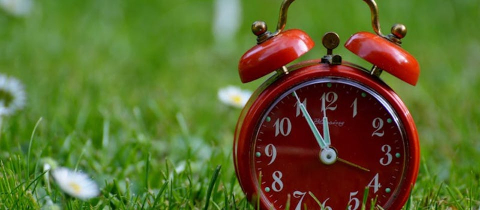As a trained entomologist (insect biologist) I am innately irked when one of my beloved insects is mis-named in public, but especially so when a beneficial one is maligned by association with a more nuisance species. This does a disservice to all bees, when they are lumped together with their aggressive and bothersome cousins, the wasps.
Bees and wasps are in fact very closely related to one another, alongside the ants (known as the Super-Families Apoidea, Vespoidea and Formicoidea, respectively) in the Insect Order of the Hymenoptera, referring to their two pairs of ‘membranous wings’. One feature that is common among the Hymenoptera is that of ‘sociality’ or group living. Many species of bees, ants and wasps live in family-based colonies, in which a maternal queen is served by dozens to thousands of her offspring, as devoted workers in the name of the family dynasty.
As it happens, one consequence of the group/family dynamic among the social Hymenoptera towards mutual hive benefit has been the evolution of a venom-laced stinging dart that has replaced the egg-laying (ovipositor) organ in those workers, who have sacrificed reproduction for the common good and defense of the family’s hive. Of course, this painful sting is the basis of our well-deserved fear of bees and wasps, because nobody likes the blistering burn of a sting and many people these days (my wife included) may die of one from an anaphylactic immune response to the venom. Needless to say, there are good reasons to be weary of these kinds of insects.
So yes, bees and wasps may have colonial nesting and stinging darts in common but that may be where the commonalities end. Even the visual similarities are not as prevalent as we might expect. For example, the pesky Yellow-jacket wasps are easily identifiable by their smooth-shelled bodies that are painted in yellow and black stripes. Incidentally, very few of the 20,000 species of bees around the world have this kind of look. Sure, many species of Bumble bees have variations of yellow and black stripes on their abdomen, but these bees are always hairy and quite large, so they should not be mistaken for a troublesome wasp.
Also, whereas the introduced European Honey Bee may resemble a wasp more superficially, their colour pattern is not nearly as bright and distinct as that of a Yellow-jacket wasp, such that a distinction should easily be made, even by the untrained eye. Furthermore, Honey Bees are not native to North America, do not survive well in most of Canada due to our extreme winters and should not be very abundant on urban patios unless an apiary (Honey bee farm) is nearby, which is unlikely in most places.
In fact, most of the 1000 or so species of bees in Canada would likely not be recognizable as a bee at all to most people, given that they might be small and metallic green sweat bees, black and hairy like the mining or digger bees or even a fluffy light-brown, such as with the leaf-cutter bees. Many of these lesser-observed bees lay their eggs singly in little nooks and cavities in their habitat, such as sandy pits or hollow plant stems and they will also provision their young with pollen or insect prey as food, for when they hatch from the egg enclosed in their private chambers. Because they are not colonial like their Bumble and Honey bee cousins, these solitary bees lack the group defense requirement and don’t have stingers, such that they really don’t threaten us at all anyways.
Another important difference between bees and wasps is in their behaviour, and this in turn, is due to the very different ecological roles that they play in nature. Bees are flower-visiting pollinators, that track changes in floral abundance and quality over the season in order to collect pollen and nectar to bring back to the hive to feed their larval sisters. Because of this variable and complex lifestyle, bees are smart insects, able to reason and innovate, all while remembering their past life experiences to amazing levels of detail. Consequently, bees are curious but usually gentle creatures and they rarely go on the offensive to sting anyone or anything, except as a means of last resort.
Wasps are another story altogether. Firstly, the vast majority of the Vespoidea Super-Family is made up of parasitic wasps that use their ovipositor to lay eggs on or in other insects, as prey for their young upon emergence from the eggs. For the purpose of this discussion, this silent majority of wasps shall remain silent, as we focus on the paper wasps instead, such as the yellow-jackets and the hornets. Ecologically-speaking, these insects are scavengers in nature, working together to collect anything that they can find, from scraps of food, to pieces of other invertebrates. These wasps aggressively seek, take and defend anything that can be brought back to feed their larval sisters in the hive made of papier mâché.
Needless to say, we are all too familiar with the aggressive and unpleasant ways of paper wasps, not to mention their seeming willingness to inject a painful sting of venom at the slightest provocation. Don’t get me wrong, I don’t like these things flying around me much more than the next person and have taken more than my share of stings through my many years of field work studying insects.
An unfortunate factor in the abundance of bees vs. wasps is due to human activity. Because bees are pollination specialists and need flowers to survive, they are increasingly under threat from urbanisation and industrial agriculture. The recent decline of native pollinator populations is a serious concern to human food production, as well as ecosystem functioning and great care must be taken to conserve their habitat and preserve those bee species from extinction (I have written about this topic before).
By comparison, as generalist scavengers, wasps do very well around human civilization. Like pigeons, rats, cockroaches and raccoons, wasps have thrived on our wasteful and messy ways and they must indeed be doing us a favour by cleaning up some of the scraps. Without these scavengers among us, we’d soon find our trash building up unsustainably. However, like the other pests on that list, wasps are only known for the bother that they cause us.
So, while I share your disdain for the nuisance of wasps getting in my personal space while I’m trying to enjoy a summertime patio drink, I feel it is unfair to throw the bees under the same bus of ill repute, given that the stakes are so high. Personally, I can’t wait for the day when I am taking in the patio vibes and I hear someone responding to an insect with glee: “Oooh a bee! How pretty!”, they would say. I just hope that they are not talking about a wasp….
Want to engage with this content? Comment on this on our Facebook page!







